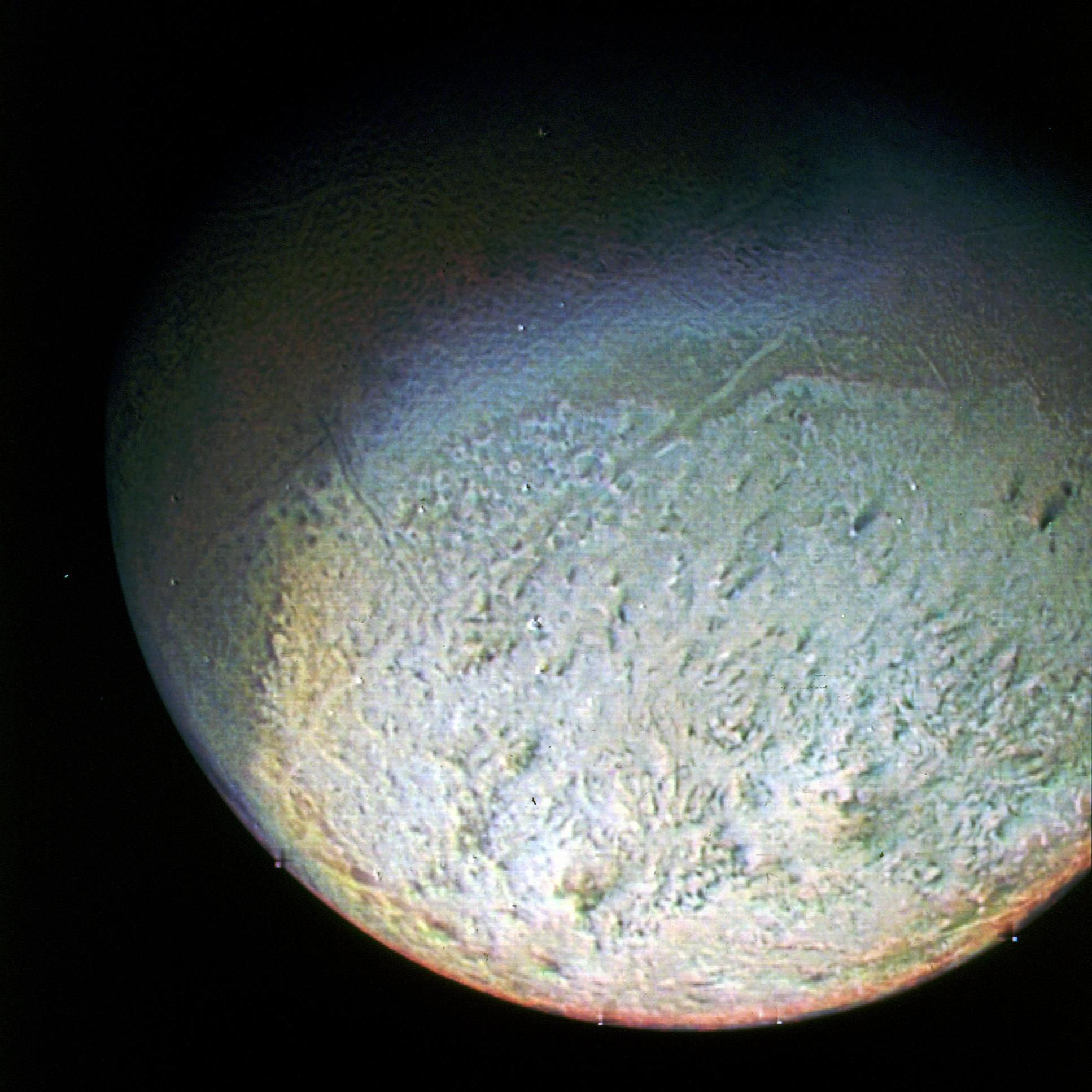export const content = `
Triton is the largest moon of Neptune and is one of the few geologically active moons in the solar system.
It features a surface covered mostly by frozen nitrogen with water ice, carbon dioxide ice, and a rocky core.

Key Facts
- Orbital Period: 5.877 days
- Diameter: Approximately 2,706 km
- Climate: Extremely cold, with surface temperatures around -235 degrees Celsius
- Average Distance from Neptune: About 354,800 km
- Orbital Speed: Approximately 4.39 km/s
Atmosphere
Triton has a tenuous atmosphere composed mainly of nitrogen with small amounts of methane near the surface.
This thin atmosphere can support transient clouds and even a type of 'snow' made from nitrogen.
Interesting Facts
- Triton orbits Neptune in a retrograde direction, which is opposite to most other moons in the solar system.
- It is believed that Triton was captured by Neptune's gravity and is not an original satellite of the planet.
- Triton's geysers can eject particles up to 8 km above its surface, suggesting internal geologic activity.
`;
